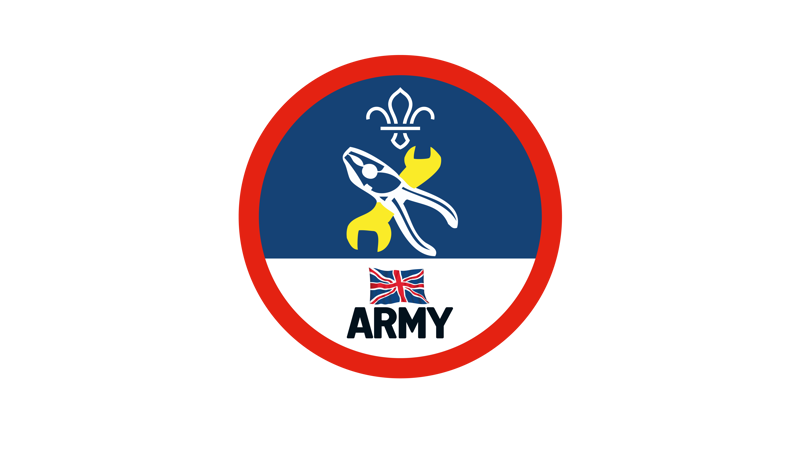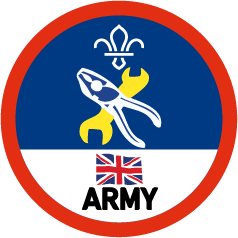
Car radiator check-up
You’ll need
- Access to water
- Hula hoop
- Large tarpaulin
- Radiator coolant
- Funnel
- Cloth
- Access to a car (with the correct manual)
Before you begin
- This activity starts off with a couple of games to help everyone understand how coolant works – the games don’t need any special equipment or expert supervision.
- The rest of the activity (the practical stuff) is part of a series of short activities in the Scouts Mechanic Activity Badge.
- Decide how you’ll run these activities. You could run a mechanics activity day with a few vehicles, so small groups can try different tasks on different vehicles at the same time. You could also run the activities as short bases during a meeting (while other activities take place).
- Decide who’ll run and supervise this activity. All of the practical activities for the Mechanic Badge should be run and supervised by a qualified mechanic (or someone with enough knowledge gained through experience).
Chat about anti-freeze
- The person leading the activity should ask whether anyone knows what coolant is. Vehicle endings burn fuel at high temperatures, and this creates lots of heat. The radiator and cooling system cool the engine down – the coolant absorbs the heat and moves it away from the engine. It’s important to keep the radiator topped up with coolant so it can run smoothly and efficiently.
- The person leading the activity should explain that coolant is a mix of water and anti-freeze (which does what it says on the tin). When a liquid freezes, the molecules bond tightly together and can’t flow around. It’s important to stop the coolant from freezing for two reasons: it needs to flow to move the heat away from the engine, and liquids expand when they freeze – if the coolant expanded it could damage the engine and cooling system.
Using the right coolant also makes the heat transfer more efficient and can protect the radiator from the inside by stopping rust and corrosion.
Cool, calm, and connected
- Everyone should get into a circle and hold hands. They’re like the coolant molecules – they’re linked together but they can still move quite freely.
- The person leading the game should put a hula hoop into the circle, so someone’s arm passes through it. The hoop represents the heat made by the engine.
- Everyone should try to move the hoop around the circle without letting go of each other’s hands. It should be fairly easy – people can just wriggle and bend their arms. When the coolant moves around freely as a liquid, it transfers the heat away from the engine.
- The person leading the game should say ‘freeze’. Everyone should straighten their arms. They should try to keep the hoop moving around the circle without bending their arms. It’ll be much more difficult – or even impossible. In the same way, a frozen liquid can’t move freely (because the molecules are bonded together), so it can’t take the heat away from the engine.
The big freeze
- The person leading the game should lay a big sheet or tarpaulin on the floor. Everyone should stand on it.
- Everyone should get into a line and hold hands. They should be able to move around quite freely – just like coolant molecules that are linked together.
- The people on either end of the line should use their free hand to fold the tarpaulin in half as many times as possible. Everyone should stay standing on it and keep holding hands, but they can bend and fold the line to fit in the smaller space. It should be possible to fold the tarpaulin a few times.
- Everyone should unfold the tarpaulin. Everyone should repeat steps two and three, but this time they can’t bend their arms. They’ll probably find it a lot more difficult because they can’t bunch together. In the same way, coolant takes up more space when it’s frozen – the bonds act like the straight arms and force the molecules apart so they can’t squeeze together.
- Everyone should imagine what happens inside the engine if the coolant that’s squeezed into a smaller space then expands. They could try it on the tarpaulin – what happens if they’re all squeezed onto the folded tarpaulin, then have to straighten their arms? They’ll probably spill over the edge. If this happens inside the engine, it can cause damage.
To watch in full screen, double click the video
Guidelines
These guidelines are generic guidelines for modern vehicles. Always check the handbook for the vehicle you’re using or get advice from a qualified or experienced mechanic: we don’t want any broken cars on our hands. This activity must always be supervised and guided by someone competent.
- Open the bonnet by releasing it from inside the car, then finding the second release catch underneath the bonnet. Once it’s open, make sure it’s locked in the open position – secure it with the bonnet strut if the vehicle has one.
- Most vehicles have a coolant expansion tank with minimum and maximum lines. Look for this tank, and check the level of coolant.
- If the coolant needs topping up, remove the cap and add coolant using a funnel. Try not to spill any – if you do, wipe it up straight away as it’s poisonous to plants and animals and can corrode or damage paintwork and other vehicle parts.
Reflection
This activity was all about developing skills. Why’s it useful to be able to get stuck in to vehicle maintenance? It helps keep people safe and can save you money too. It’s also better for the environment to look after vehicles so less resources are used to repair avoidable faults (or even replace cars). Was it easy to learn this skill? Is this skill the same for every single vehicle, or would people still need to check the manual?
This activity also gave people the chance to be independent. How did it feel to get stuck in to a practical task? What role did the adults have in this activity? They supervised to make sure no one (and no vehicles) got hurt.
Safety
All activities must be safely managed. You must complete a thorough risk assessment and take appropriate steps to reduce risk. Use the safety checklist to help you plan and risk assess your activity. Always get approval for the activity, and have suitable supervision and an InTouch process.
- Chemicals
This task involves the use of potentially harmful fluids or chemicals. Make sure you follow all relevant safety guidance. Make sure you dispose of them appropriately too, in line with safety guidance.
- Manufacturer’s guidelines
All vehicles will be different so always follow the manufacturer’s guidelines.
- Outdoor activities
You must have permission to use the location. Always check the weather forecast, and inform parents and carers of any change in venue.
- PPE
Before completing this activity make sure you have suitable personal protective equipment (PPE). This could include eye or ear protection, gloves, and anything else you need to protect yourself. You’ll know what you need as a result of completing the risk assessment for the activity.
- Vehicle readiness
Before completing this activity, make sure that the engine’s fully cooled. The vehicle should be parked on flat, stable ground with the parking brake applied.
While this activity must always be supervised and guided by someone competent, they can vary the level of hands-on help they provide. People with more knowledge and experience should do more for themselves (with supervision); people with less knowledge and experience may need more hands-on help.
The person supervising and guiding the activity can help out with parts anyone finds tricky including reading instructions, lifting or moving heavy objects, or doing the smaller or more fiddly tasks.
If anyone doesn’t want to hold hands during ‘Cool, calm, and collected’ or ‘The big freeze’ they could hold one end of a piece of rope in each hand – the person on each side of them could hold the other end.
All Scout activities should be inclusive and accessible.
This activity’s just one area of vehicle maintenance and repair. Encourage anyone who’s interested to complete the other activities in the Scouts Mechanic Activity Badge.
Involve young people in the decision about how to do the Scouts Mechanic Activity Badge (if they want to do it at all) – would they rather do the activities separately over different meetings or as part of an activity day? Just because this activity needs supervision (and you can’t alter the content or safety guidance), doesn’t mean young people can’t have a say.
